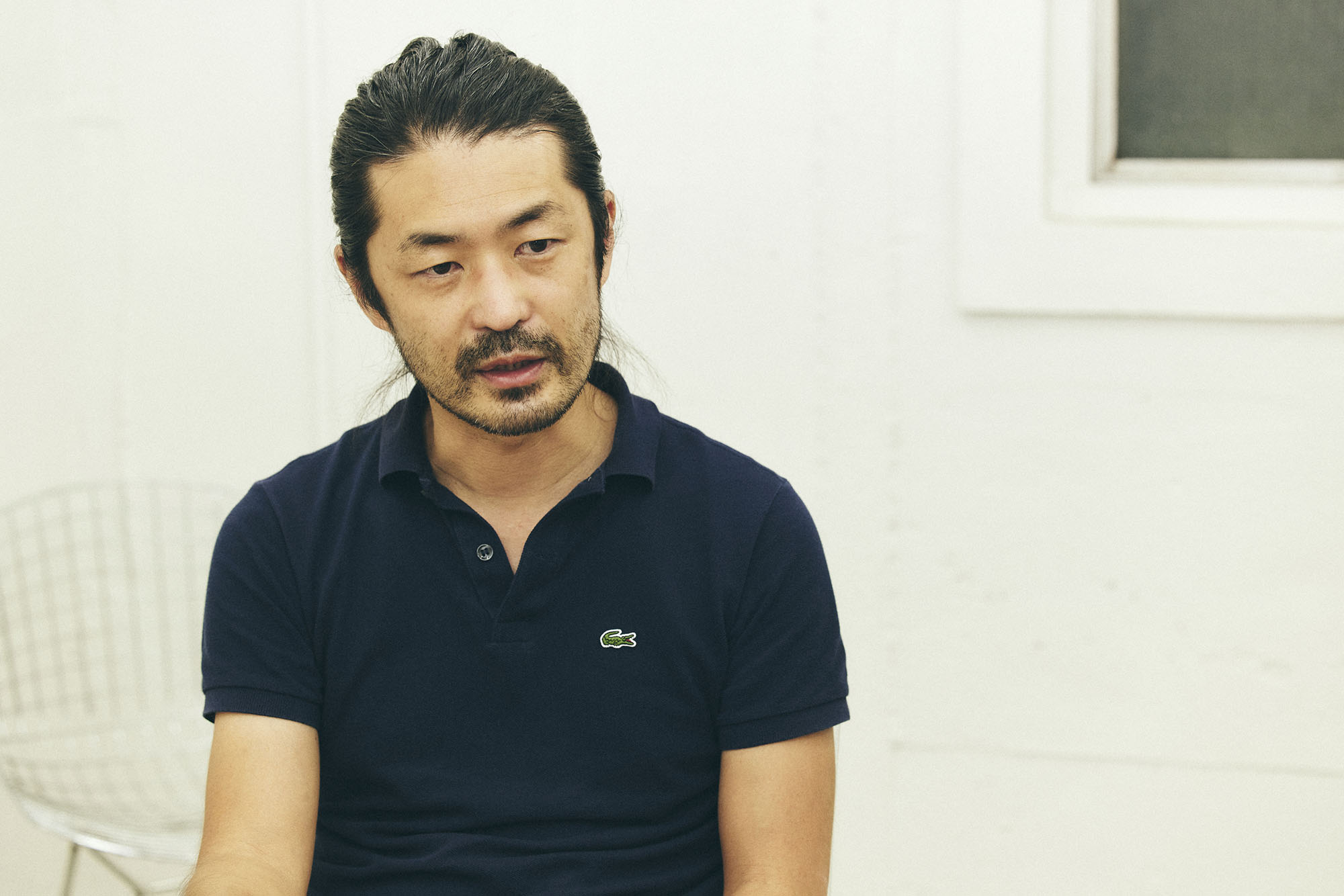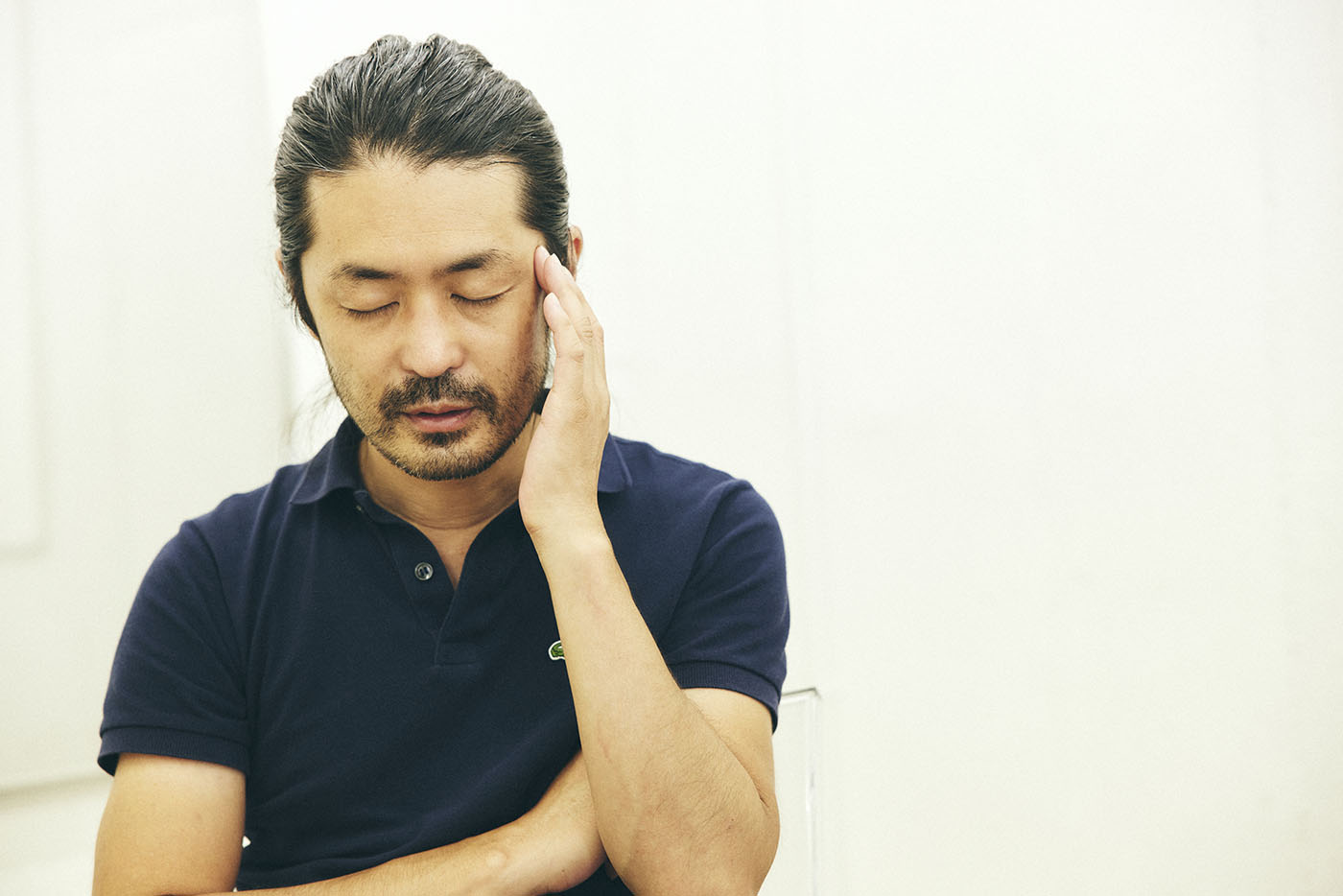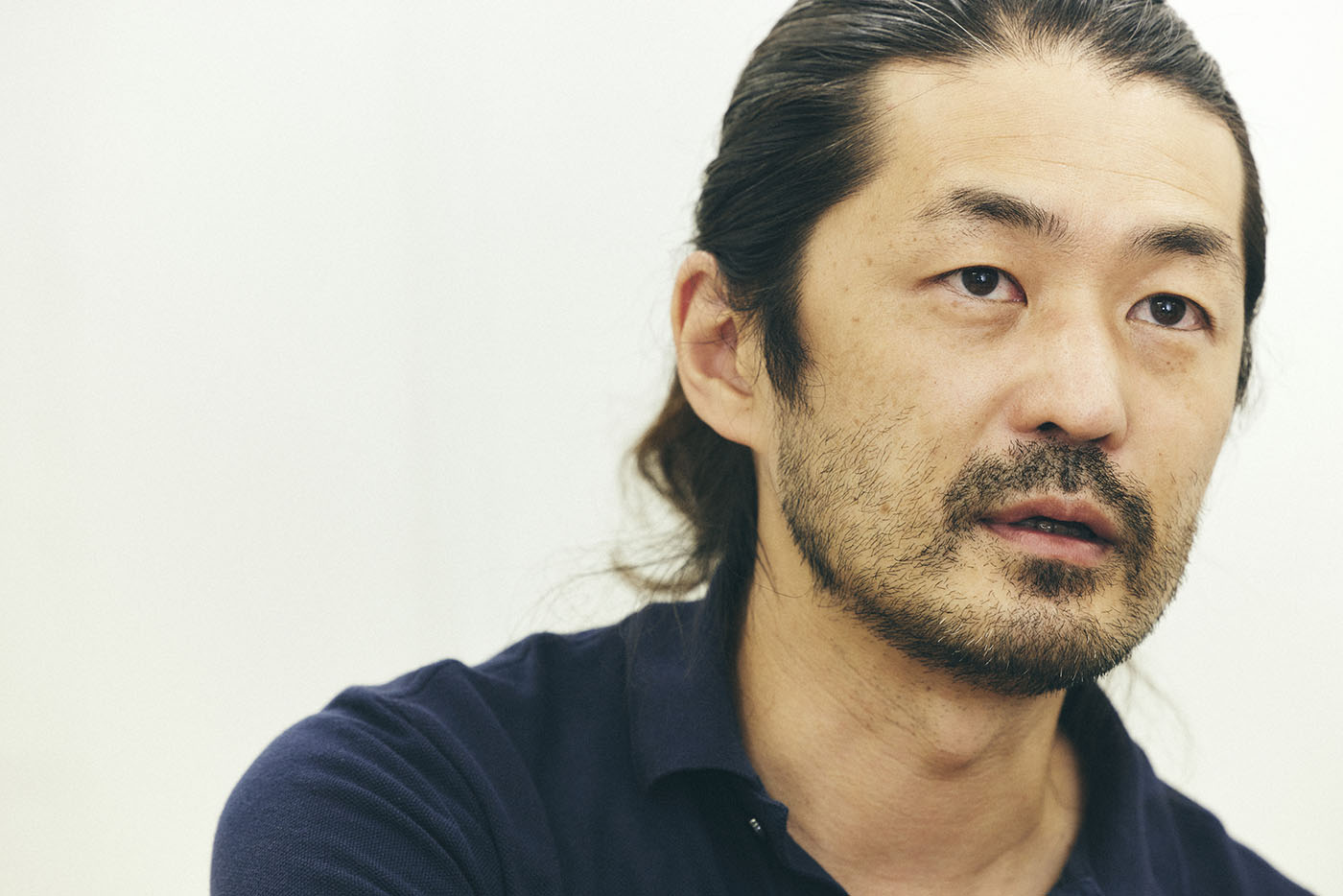
Firstly, can you tell us about what prompted you to start this project? What thoughts brought you here?
Yamaguchi:
I’ve been involved in many projects overseas, including in the United States, Europe, and Southeast
Asia. And I was doing a project in Laos… an interior project for a private residence. The first time I
went to the site, there was the yellowish-brown flow of the Mekong River, and I found myself standing in
front of a huge building like the Palace of Versailles, probably because Laos used to be a French colony
in the past. But anyway, the walls of the building were colored gold. And I could see that from the
airplane. It was a private residence, but I could easily spot it from the air. So, I just remember being
amazed by the strangeness of the scale, style, and color of the structure. It was like nothing I’d ever
seen before. But at the same time, it was a moment when I was left wondering what I would be able to
create there.
And then I began thinking the same thing in other countries too. Like the time I worked on a huge one-story office in the sprawling lush city of Silicon Valley. I was at their Los Angeles headquarters, surrounded by American executives, making my presentation and trying to convince them that mine was the best design. Of course, they’re the ones who ultimately decide whether they should invest in my design, and fortunately they accepted my proposal. But while I was explaining it, I started to wonder what I perceived as the foundation of my designs. Obviously, I didn’t let that doubt show. I made sure I looked like I was full of confidence during my presentation.
Most of my projects abroad are commissioned by local corporate or individual clients, rather than Japanese subsidiaries overseas. That means that, naturally, the assumptions they make about practically everything are different from mine, and that compels me to be conscious of what I fall back on when I make decisions. From economic efficiency to rationality, functionality, aesthetics… all these values need to be reset. So, you have to find what’s left of yourself, otherwise you won’t have a basis for the way you think. I thought that I needed to find my guiding principle, or it was going to be difficult working as an architect.
What had been the foundation for your designs before?
Yamaguchi:
With projects in Japan, I don’t think it mattered as much whether I had a specific foundation within
myself. I think I just found myself in situations where the designs were also shaped by the many
conditions and factors from the outside. For example, things like “This material is expensive,” or “This
structure takes time,” or “That area should have this kind of atmosphere.” I think these things
inadvertently have a considerable effect on a project. But when you’re in another country, these
assumptions are nullified.
So, I started to think about what my thoughts are in the first place. And at around that time, Professor Teppei Yamada, who is currently professor emeritus of comparative art history at Meiji University… he told me that my work has something in common with Ki no Tsurayuki’s Japanese waka poems. I asked him what he meant by that. And, setting aside his comments about my work, I was fascinated by how he described Ki no Tsurayuki’s waka poems. Simply, from what I understand, it was about the structure of lining up similar items. Professor Yamada pointed out that he could see the properties of that structure in many aspects of my work. And sure enough, looking back at my work, I realized he was right. My work did consist of lining materials and elements side by side. This point, raised by Professor Yamada, became a big clue for me, or springboard for thinking about what I fall back on as my basis.
And so, I went back to my alma mater, Tokyo University of the Arts, and enrolled in a doctoral course with Professor Wataru Mitsui, who specializes in Japanese architectural history. There, I’m studying things like Japanese architecture, Japanese gardens, and Japanese waka poetry. One day, we were talking about shakkei, or “borrowed scenery,” and Professor Mitsui commented on how you get a remarkable view of Tokyo Dome when you step into Koishikawa Korakuen Gardens. And when I heard that, it somehow clicked with me. So, I went to see for myself straight away, and I also thought it was wonderful. That became a big starting point for me to think about shakkei from a new perspective.
What does your research consist of specifically?
Yamaguchi:
With the doctoral course, I’m doing research for a doctoral thesis. So, I’m writing a dissertation.
There’s already a vast amount of past studies from many approaches about Japanese architecture and also
Japanese gardens. So, I’m writing a dissertation while studying them. But since I am an architect, I’m
hoping to present my thoughts in a visual way. Something that needs to be read to be understood is
interesting, but I think something that can be understood just by looking at it is an attractive
alternative too.
I think a Japanese garden is a place that everyone has visited at least once, if you’re Japanese and you live in Japan. And there’s this image that many people share. When they look at shakkei, what they see is probably something very natural to them. There’s a hedge and you can see the ridgeline of the mountains. It’s a beauty people take for granted, and something that’s natural is very attractive. I thought this had something in common with the core of my designs, of lining textures side by side. So, I thought that, rather than explaining this in words or texts, it could be better understood if I presented it through impressive pieces of scenery, or in other words, as photographic work.

So, I’d originally planned to take the pictures myself, and I should have started right away. But then I got bogged down with trying to choose the perfect camera. I thought I needed a good camera to get good results, and tried several before finally settling on one. That took me a year. In hindsight, I should have just started. But anyway, in the meantime, I made plans where to go, and I actually did go to some of the gardens to take pictures. That was the beginning of my solo journey.
But once I started shooting, I soon realized that a great camera doesn’t guarantee great results. I couldn’t take pictures that reflected what I felt, and I ended up getting lots of pictures that were somehow too explanatory. But even so, they did reflect some of the emotions I felt when I was there at the time. So, they’ve been useful when I’m trying to remember. Those are the pictures I’m showing with “Solo Journey.” Anyway, I became painfully aware that I didn’t have the skills to take photographs that would express “beauty that’s taken for granted,” which was what I’d aimed for. So, I decided I needed a photographer to take them, and asked Mr. Kentaro Kumon.
What did you like about Mr. Kumon’s work?
Yamaguchi:
I actually run a gallery called MYD Gallery in Minami-Azabu, which specializes in contemporary art
photography. And we had Mr. Kumon with us a while ago, exhibiting his series of work photographing
peninsulas in Japan. When I saw his work, it felt powerful. The power of his work wasn’t anything
violent, but a strength that seems to reach into the subject, grab its essence, and pull it out. I
thought his photos brought obscure landscapes into focus as something we should be seeing.
Another aspect is that Mr. Kumon had taken pictures of what he’d felt on his visits to various peninsulas in the context of the whole of Japan, and his photos managed to really capture Japanese scenery. Even with countryside landscapes which I might feel are similar, he’s been able to show them as things that are clearly different in his work. I think Mr. Kumon probably has an extremely sensitive sensor for matters like that. So, I thought that he would be able to expose the slight and obscure changes found in Japanese gardens, and I asked him. He’s really good with people too. So, even if we suddenly decided we should take pictures at the site, I was pretty sure he’d be able to do something about it.
You could’ve written about all the places you’ve been and what you’ve seen, but you chose to ask a photographer to express your thoughts. Why is that?
Yamaguchi:
I’m an architect, and basically my job is to create physical things. So, I do sometimes write, but I
like objects I can see with my eyes. I think I like the aspect that something is communicated instantly
through your eyes. You can understand a text by reading it, but that also means you need to read it to
understand it. I feel that trying to read about Japanese gardens to understand them can be frustrating.
So, instead, I’d like to create and communicate something that everyone can feel and understand, even foreigners who don’t know anything about the subject. I thought that perhaps I could present a new perspective for Japanese gardens, or create a new way of seeing them through Mr. Kumon’s photographs.

Why did you focus your attention on Japanese gardens?
Yamaguchi:
When I design, I try to keep the concept hidden. Of course, design work involves a lot of contemplation.
But I just think it’s embarrassing if you’re trying too hard to tell people what you have in mind,
explaining what your intentions were. Then, how do I go about it? I try to present new scenery, even
with buildings.
For example, imagine there’s a beautiful bubbling brook, rice fields spreading out next to it, and mountains in the distance. There is no underlying concept for natural scenery like that. Those elements just happen to exist next to each other. But that scenery feels so good, you want to eat, or work, or even sleep there. The landscape wasn’t created for some specific purpose. In other words, there is no concept for it. So, I want to create new buildings or environments that are like natural scenery. I would be building architecture, but I want to create scenery.
Whether it’s Japanese architecture or contemporary architecture, they’re an aggregation of what the creators intended and the technology of the time. And if you look, you can see there’s a huge amount of information there. The buildings themselves explain that. But Japanese gardens only consist of rocks, trees, water and soil. This is also based on the gardener’s intentions, but they are vastly more primitive, or fundamental, compared to architecture. That’s why I felt Japanese gardens were more suited to my interest of creating scenery.
You described your designs as lining textures side by side. What did you mean by that?
Yamaguchi:
For example, in one of my designs, I had transparent glass next to mirrored stainless steel. The glass
is see-through, but it can reflect light and look like a mirror depending on the amount of light. So, I
had similar materials next to each other. That’s what I mean as a specific example. When I look back at
what I’ve designed so far, I see the same qualities in Japanese gardens, and that makes me elated.
Does that mean you don’t feel there are concepts behind old Japanese designs that have similar materials next to each other?
Yamaguchi:
No, of course I do. I think, when slightly different things are lined up, it’s a state closer to nature.
That’s probably an aesthetic sense peculiar to Japan. According to Professor Yamada’s research, there’s
a point in history when there was a cultural shift from a longing for Chinese culture to a culture
unique to Japan. He says that it was brought about by the Kokin Wakashu, the first imperial anthology of
Japanese poetry, and the will of one of its compilers, Ki no Tsurayuki. In other words, there was a
shift from using Chinese style phrases (tsuiku), which places emphasis on contrasts, to a Japanese style
expression (engo) of combining similar things together. Plum flowers are a typical theme in Japanese
waka poems, but there was a major change in the way they appear in poems from the Kokin Wakashu onwards.
Until then, they used to be described in Chinese style phrases, emphasizing their contrast with snow.
But in the Kokin Wakashu, the number of poems that describe them in that way goes down drastically.
Instead, there’s an overwhelming increase of engo expressions, such as the scent of plum flowers
attracting Japanese bush warblers. It was the result of Ki no Tsurayuki’s efforts to compile poems that
would establish Japanese aesthetics. I’ve also done some research on how topics have changed in the
imperial anthologies.
Whether it’s the black and white gravel at Takihara-no-miya, or the hedgerow made of bent bamboo at Katsura Imperial Villa, they’re all extremely simple devices, and the result of natural manipulation. Having black and white next to each other by using black rock fragments and white rock fragments that are of the same size and texture seems more like a slight difference between similar things, rather than a contrast. It’s the same thing with the bent bamboo grass and the straight bamboo grass growing right behind it. The engo expressions, or slight differences in similarities found in the waka poems of the Kokin Wakashu onwards, can be seen everywhere in Japanese gardens.
What are your plans for the future of this project?
Yamaguchi:
I’m planning to produce a collection of photographic works, but I’ll be working on other projects at the
same time. For example, the shakkei Island project involves the renovation of an abandoned elementary
school on a small island in the Seto Inland Sea. It’s a project where I’m going to create a new garden.
I’m thinking of showing it as an embodiment of the idea of “neighboring textures.” I’m also hoping it
will become a new travel destination for everyone.
Interview and text by Mai Tsumuraya